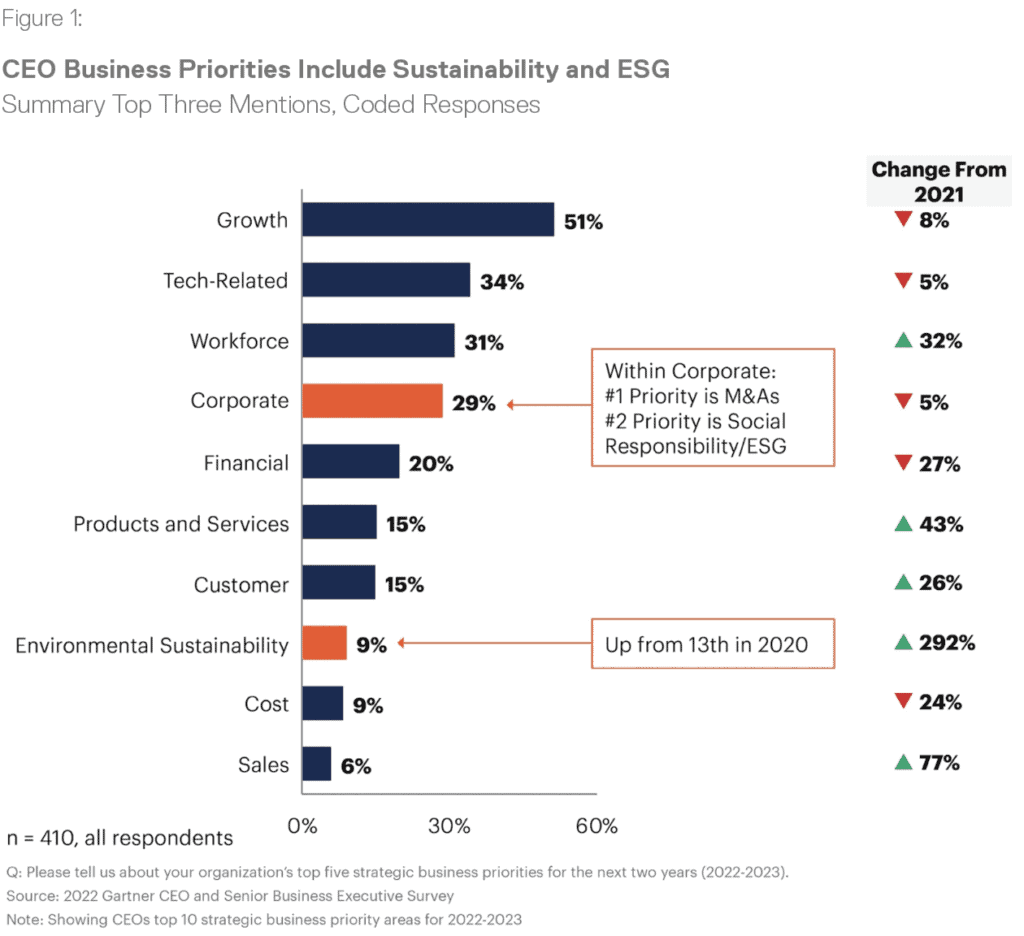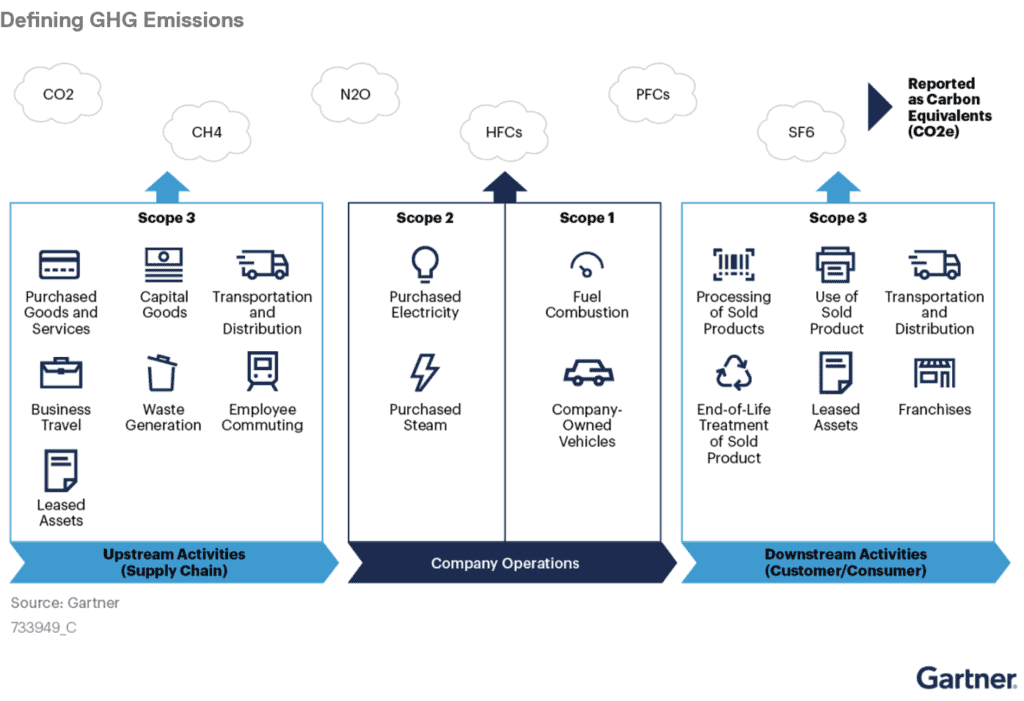
Leaders must ensure accountability for Sustainability performance by tracking and measuring Key Performance Indicators (KPIs).
The adage “what gets measured, gets done (or managed)”* is especially contentious (many question if this is a fallacy or contradiction) as the latest IPCC report shows greenhouse gas emissions continue to rise, and current plans to address climate change are not ambitious enough to limit warming to 1.5°C above pre-industrial levels — a threshold scientists believe is necessary to avoid even more catastrophic impacts.
While there have been numerous pledges from global, national and business communities and corporations to net zero commitments and a greener future, the progress made to meeting the Paris Agreement’s GHG emissions target has been very slow, yet this is somewhat understandable as many of our clients, especially the SMEs, had erstwhile struggled with getting started on their sustainability journey or even in obtaining the relevant baseline data.
In a recent global survey by Gartner, Growth is still the top CEO business priority, but sustainability and Environment, Social and Governance (ESG) have emerged as key priorities. In 2022, environmental sustainability became a top 10 business priority for the first time ever, with 9% of the respondents naming it as one of their top three (see Figure 1). Indeed, the “proof is in the pudding,” and top management must continue to drive incessantly their sustainability mission and climate ambition. They have to align their leadership teams and mobilise their entire workforce.

A critical necessity is to obtain the relevant data, the most important tool for analysing business sustainability.
But how do businesses use data effectively and gain accurate insights into their sustainability performance? By using KPIs, organisations are able to measure aggregated data against business targets to determine the success of their strategy implementation.With the acceleration of digital transformation in industries — alleviating intensive manual processes in businesses — companies are more capable of analysing their data faster to keep it relevant.
A successful ESG program requires diverse and highly distributed data from both internal and external sources, including:
- Energy consumption and emissions factors — Calculating Scope 1 and Scope 2 emissions requires fuel consumption and energy usage reports from utilities. Emissions factors provide estimates for converting energy use into CO2 equivalents.
- Renewable energy, carbon offsets and markets — Enterprises must pursue a range of strategies in order to progress to net zero. Actual renewable energy production needs to be tracked against targets. Carbon offsets need to be tracked to ensure that actual carbon capture meets plans.
- Supply chain and life cycle assessment — Calculating Scope 3 emissions requires data from supply chain partners. Questionnaires and surveys are the dominant form of data collection. However, enterprises will increasingly need data to be validated and verified. Some vendors are starting to provide carbon data for the products they sell as well, such as computing equipment or cloud computing.
- Enterprise data — Data is needed from various internal systems, depending on the ESG metric in question. For instance, purchasing data from ERP systems and production data from manufacturing execution systems, operational data from industrial systems can include on-premises meters, submeters and other sensors, and air travel from travel management systems to name a few.
Here are some of the KPIs that businesses are already using to create actionable sustainability insights:
Carbon footprint
This may seem like a topic that has already been discussed to great lengths, but this is because company carbon footprint is one of the most important KPIs to measure against as it analyses a broader range of data from both the company in question and its suppliers and customers. By measuring Scopes 1, 2 and 3 emissions, organisations can assess how the market presence of their products or services are impacting climate change.

Consumption of energy
What is the easiest way to reduce the amount of fossil fuel-generated energy?
Businesses can determine how much energy their operations consume and determine where they can use less, resulting in cost savings for the company and fewer emissions expelled from energy production facilities. Digital tools are more than capable of measuring how much energy is used in different areas and applications, such as the industrial internet of things (IIoT) can provide valuable information on production energy consumption.
Supply chain emissions
While the manufacturing or production facility of many enterprises is the primary source of emissions, they must consider its supply chain emissions (that of its vendors). Many are already providing appropriate solutions for reducing emissions and waste in the logistics sector with alternatively-powered vehicles and transportation solutions, but in order to gain full insights, companies must have access to the GHG data of their suppliers or service providers. In Europe, the German Supply Chain Due Diligence Law, adopted in June 2021, for instance, mandates that all companies subject to its provisions undertake due diligence across all tiers of the supply chain.
Waste reduction and recycling rates
With customers becoming more conscious of the recyclability and sourcing of product materials, businesses are making changes in procurement and operations to remain competitive. To remain in line with market trends, companies will benefit from monitoring their waste management to ensure that not only the production of products is sustainable, but the products themselves fit into a circular economy.
Social impact
In relation to sourcing and the shift in consumer behaviour, businesses must be able to recall information regarding the treatment of suppliers. Environmental, social and governance (ESG) reporting can provide great insights into the social impacts of operations. EcoVadis, for example, is able to provide insights to supporting businesses in obtaining ESG visibility.
Here are some practical tips (certainly not exhaustive) on how leaders can immediately embark on to reduce greenhouse gas emissions:
- Read and discuss enterprise materiality assessment, climate strategy and greenhouse gas (GHG) targets. Align the entire organisation with an annual Sustainability Report (Access here to view the services provided by RHT Green).
- Identify tools and training resources to acquire the necessary data and analytics (D&A) skills to report GHG initiative progress. (RHT Green is working on a Life Cycle Assessment (LCA) carbon profiling tool with A*STAR so please watch this space)
- Create an enterprise-wide D&A platform for identifying metrics to report progress toward enterprise GHG goals
- Develop a sustainable IT program with two parts — Fix IT by initiating a green IT program (migrate to the cloud, co-locate servers, promote energy-efficient data centers), and fix the business by reducing Scope 1, 2 and 3 GHG emissions (work from home, adopt energy-efficient usage of IT)
- Set targets for energy, water usage, waste generation and Scope 3 emissions by obtaining a baseline and setting ambitions
- Develop detailed plans for a digital workplace by aligning to GHG goals
In enterprises with corporate social responsibility (CSR) programs that focus on material issues to become sustainable, leaders must create a common data infrastructure or platform to gather, analyse and report GHG emissions from Scopes 1, 2 and 3.
ONERHT has set carbon reduction targets that are aligned with the globally accepted Science Based Targets initiative (SBTi) and in accordance with UN Sustainable Development Goal 13, read more about our Race to Net Zero by 2030 here.
However, many SMEs face barriers such as insufficient knowledge, resources, and training. As a starting point, one can look to support and guidance from global and national organisations such as “The SME Guide to Corporate Sustainability” published by the UN Global Compact. For more bespoke or customised solutions, drop us an email at enquiries@rhtgreen.com. We would love to chat with you and discuss your sustainability plans.
*“What gets measured gets done.” The origin of the statement is up for debate (click here if you want to geek out a bit on that – some say it goes back to Rheticus in the 1500′s!), and it seems that the original phrase was actually “If you can measure it, you can manage it.” Regardless of the origin or the wording, the message is clear: measuring something gives you the information you need in order to make sure you actually achieve what you set out to do.


